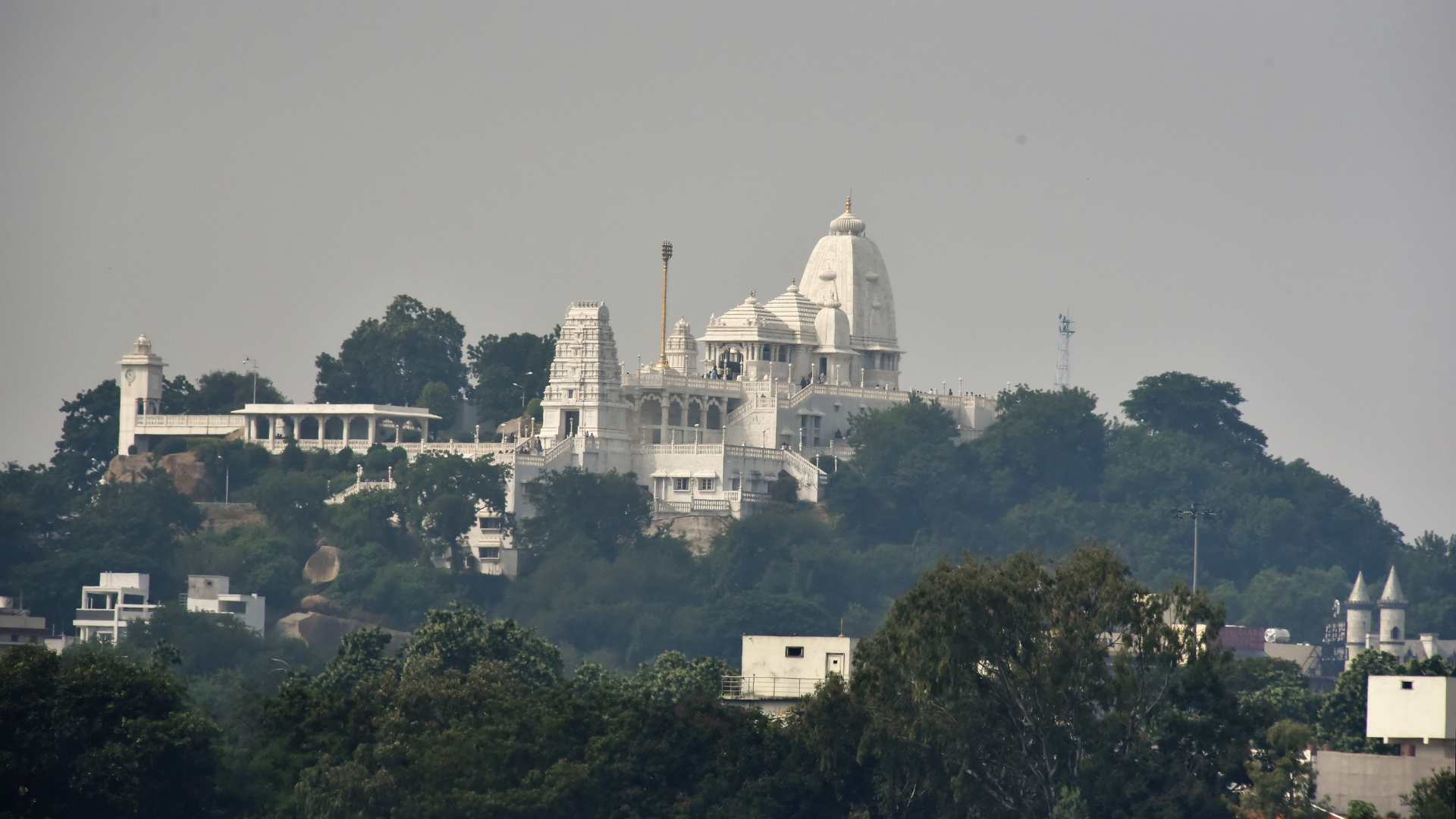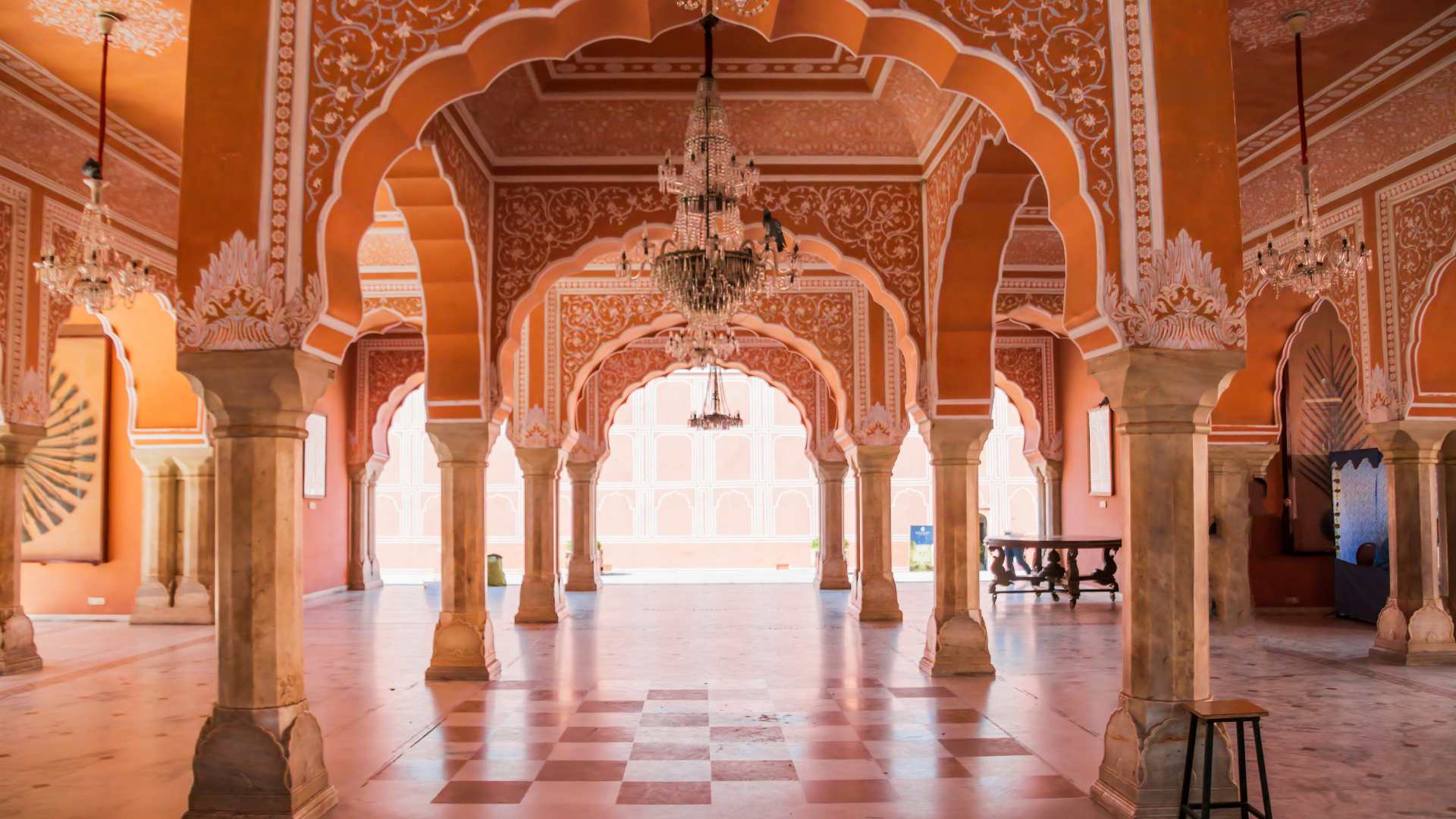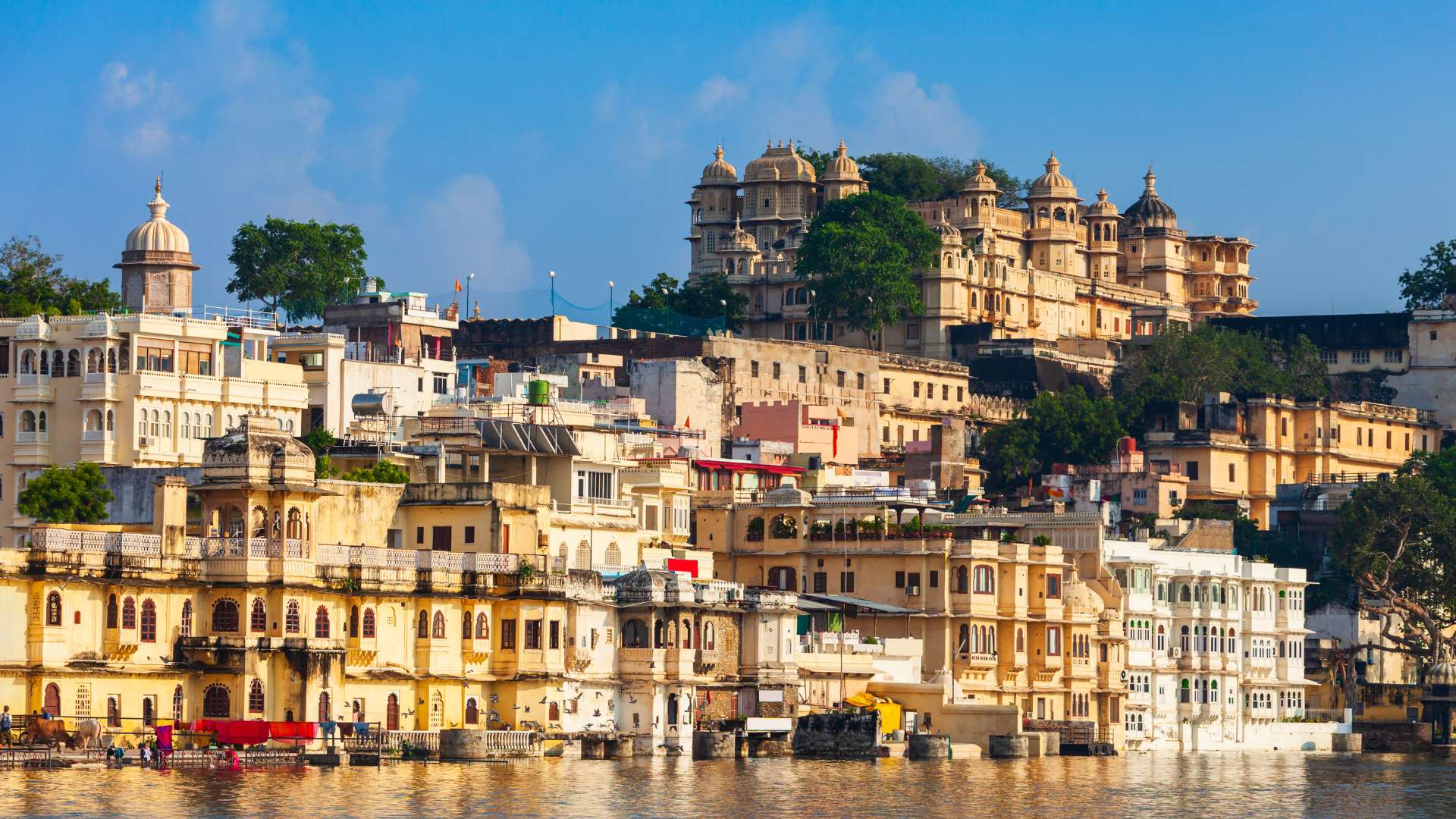Table of Contents
ToggleWhat defines the most developed cities in India, and which cities are leading the way in growth and GDP? India’s urban landscape is evolving rapidly, with cities emerging as economic powerhouses that drive the nation’s development.
Each city on this list plays a crucial role in shaping India’s economy, culture, and global presence, offering a unique mix of infrastructure, industry, and quality of life. From technology hubs and industrial centres to historic trade ports and cultural capitals, these cities reflect India’s diverse strengths and ambitions.
In this guide, we rank the top 10 most developed cities in India based on their growth, GDP, and influence. Join us as we explore what makes these cities essential to India’s present and future and discover why they stand out as leaders in development.
What Defines a “Developed City” in India?
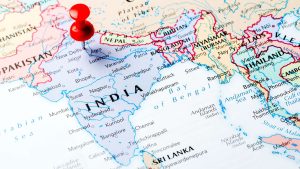
A developed city in India isn’t just defined by economic prosperity but also by factors like infrastructure, quality of life, and sustainability. Key indicators include a high GDP contribution, well-planned infrastructure, robust public services, and efficient transportation systems.
Developed cities also typically feature diverse industries, which create stable employment opportunities and a strong focus on education and healthcare. These cities balance rapid urbanization with efforts to protect green spaces and improve air quality, making sustainability a top priority.
For citizens, a developed city offers access to essential services, high living standards, and vibrant cultural and recreational options. Together, these factors create a well-rounded urban environment that supports economic growth while enhancing residents’ quality of life.
Cities that achieve this balance become benchmarks for development, setting an example for others in the region.
Why Are GDP and Economic Growth Important in Ranking Cities?
GDP (Gross Domestic Product) is a primary indicator of economic health and a key measure in ranking a city’s development. Cities with higher GDPs contribute significantly to India’s overall economy, attracting both domestic and international investment.
Economic growth supports better public services, infrastructure, and amenities, benefiting residents and businesses alike. A strong GDP signifies not only wealth but also job opportunities and increased consumer spending, both of which drive further urban development.
The impact of high-GDP cities extends beyond local boundaries, boosting regional economies and positioning India as a global competitor.
When assessing a city’s growth and development, GDP reflects its potential to thrive sustainably while offering a high quality of life to residents. As such, GDP acts as both a measure and a driver of future progress.
How Do Infrastructure and Connectivity Impact City Development?
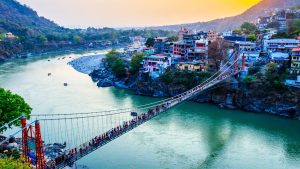
Infrastructure and connectivity are crucial for a city’s development, serving as the foundation for economic activities, efficient transport, and quality urban living. Well-developed infrastructure includes roads, airports, metros, and water supply, ensuring a smooth daily experience for residents and businesses.
High-quality infrastructure attracts businesses and skilled professionals, contributing to the city’s economic ecosystem. Connectivity also facilitates trade and tourism, helping cities integrate into global supply chains.
Cities that prioritize infrastructure and connectivity often see improved productivity, reduced travel time, and lower pollution levels.
Furthermore, innovative infrastructure projects, such as smart city initiatives, enhance sustainability and position cities as forward-looking centres ready for future growth. Cities that invest in connectivity become more resilient and capable of managing future urban challenges.
What Role Do Industries and Employment Opportunities Play in a City’s Development?
Diverse industries and abundant employment opportunities are hallmarks of a developed city. Cities with well-established sectors, such as finance, technology, manufacturing, and education, drive economic growth by creating jobs and boosting consumer spending.
Each industry contributes uniquely to IT hubs, drawing tech talent, manufacturing plants fostering skilled labour, and educational institutions attracting students, enriching the local workforce. These industries, in turn, support numerous smaller businesses, from retail to dining, creating a self-sustaining economy.
For residents, diverse employment opportunities mean stability and quality of life, while for the city, industries ensure a resilient, adaptable economy that can evolve with global market shifts. As industry diversity grows, the city’s economy becomes more adaptable to global trends, reducing economic risks.
How Does Quality of Life Influence a City’s Development Ranking?
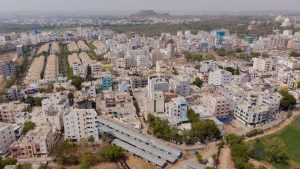
Quality of life is an essential factor in ranking developed cities, reflecting the living standards enjoyed by residents. A high quality of life includes access to clean air, healthcare, education, housing, recreational spaces, and cultural amenities.
Cities that prioritize quality of life attract skilled professionals, making them more competitive and innovative. Amenities such as parks, cultural landmarks, and public spaces enhance the overall urban experience, fostering a sense of community.
Additionally, factors like public safety, effective waste management, and pollution control contribute to a cleaner, healthier environment.
A focus on quality of life not only benefits residents but also boosts the city’s reputation, encouraging further growth. In the long term, these aspects make cities attractive to both families and businesses alike.
Why Is Sustainable Development Important for Indian Cities?
Sustainable development is vital for Indian cities as they expand rapidly, facing challenges like pollution, population density, and resource scarcity. Sustainability initiatives include waste reduction, green building practices, and renewable energy adoption.
Developed cities are now prioritizing projects that reduce their carbon footprint, from public transportation systems to green spaces. Sustainable urban planning helps reduce environmental impacts, ensuring that cities can grow without depleting resources or harming ecosystems.
By focusing on sustainability, cities not only improve residents’ quality of life but also prepare for future growth. Sustainable development aligns with India’s larger goals for environmental responsibility and ensures urban resilience against climate challenges.
This approach allows cities to thrive, protecting both natural resources and economic growth.
Top 10 Most Developed City in India
1. Mumbai
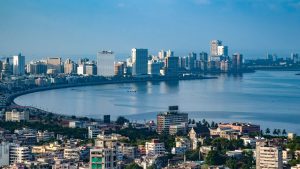
Mumbai, widely regarded as the most developed city in India, is a thriving metropolis that epitomizes India’s economic and cultural evolution. The city blends its historic legacy with cutting-edge urban development, creating a unique identity as both a global financial hub and a cultural hotspot.
Its world-class infrastructure, diverse population, and unmatched opportunities make it a magnet for dreamers and achievers alike. The city’s dynamic workforce and constantly expanding economy are essential to India’s growth story.
From the glamour of Bollywood to its iconic heritage sites like the Gateway of India, Mumbai offers a mix of tradition and modernity. It is a city that never sleeps, with a relentless drive for progress.
As it continues to modernize, Mumbai sets the benchmark for urban resilience, innovation, and sustainable growth. Its resilience in facing challenges and consistent economic contributions reinforce its position as one of the most significant urban centers shaping India’s future.
Mumbai’s Key Statistics
| Category | Details |
| City Name | Mumbai |
| State | Maharashtra |
| Population (approx.) | 21.7 million (2024) |
| GDP Contribution | ~$450-500 billion USD, contributing around 6.16% to India’s GDP |
| Key Industries | Finance, Bollywood, IT, Textiles, Pharmaceuticals, Port & Shipping |
| HDI Rank | Among the top cities in India, with a relatively high standard of living, income, and healthcare |
| Quality of Life Index | 137.6 (global city with high living standards but expensive) |
| Literacy Rate (%) | 89.7% (above the national average) |
| Per Capita Income | ~$23,000 USD |
| Major Infrastructure | Chhatrapati Shivaji Maharaj International Airport, Mumbai Suburban Railway, Bandra-Worli Sea Link, Mumbai Metro |
| Prominent Tech & Business Hubs | Powai (Hiranandani Gardens), Navi Mumbai, Bandra-Kurla Complex, and SEEPZ (Special Economic Zone) |
| Tourism Attractions | Gateway of India, Marine Drive, Elephanta Caves, Juhu Beach, Siddhivinayak Temple, Haji Ali Dargah |
| Education and Research Institutes | IIT Bombay, University of Mumbai, TISS, NMIMS, and several prominent colleges and research centres |
| Healthcare Facilities | 1,100+ hospitals, including top institutions like Tata Memorial Hospital, Kokilaben Dhirubhai Ambani Hospital |
| Environmental Initiatives | Several green spaces (like Aarey Colony), waste management programs, efforts to reduce plastic waste, tree planting initiatives |
2. Delhi
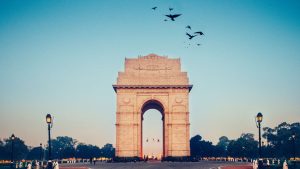
Delhi, India’s bustling capital, is a vibrant blend of historical grandeur and contemporary dynamism, positioning it among India’s most developed cities.
Known for its rich tapestry of Mughal architecture, monuments, and bustling markets, Delhi holds cultural and political significance that’s deeply embedded in its urban fabric.
The cityscape seamlessly integrates ancient heritage sites like the Red Fort and Qutub Minar with modern landmarks, symbolizing the nation’s journey from history to progress.
With a reputation as a hub for policy and business, Delhi attracts professionals, diplomats, and students from across the globe. The city’s dynamic lifestyle reflects its cosmopolitan nature, offering diverse experiences in cuisine, shopping, and entertainment.
Despite its challenges, Delhi continues to grow and modernize, with extensive infrastructure developments and a thriving economy that support its influential role on the national stage.
Delhi’s Key Statistics
| Category | Details |
| City Name | Delhi |
| State | Delhi (National Capital Territory) |
| Population (approx.) | 33 million (2024) |
| GDP Contribution | ~$293 billion USD, contributing around 4.1% to India’s GDP |
| Key Industries | Government, IT, Telecommunications, Media, Tourism, Trade |
| HDI Rank | Among the highest in India with advanced healthcare, education, and income levels |
| Quality of Life Index | 123.5 (high standard of living with some challenges) |
| Literacy Rate (%) | 88.7% |
| Per Capita Income | ~$11,300 USD |
| Major Infrastructure | Indira Gandhi International Airport, Delhi Metro, Delhi-Noida Direct (DND) Flyway, Yamuna Expressway |
| Prominent Tech & Business Hubs | Connaught Place, Gurugram (NCR region), Cyber City, Nehru Place |
| Tourism Attractions | Red Fort, Qutub Minar, India Gate, Lotus Temple, Akshardham Temple, Humayun’s Tomb |
| Education and Research Institutes | Delhi University, Jawaharlal Nehru University, AIIMS, IIT Delhi, Jamia Millia Islamia |
| Healthcare Facilities | Numerous hospitals and healthcare centers, including AIIMS, Fortis, Apollo, and Max Healthcare |
| Environmental Initiatives | Efforts to combat air pollution, tree plantation drives, Yamuna cleaning projects, and solar energy initiatives |
3. Bengaluru
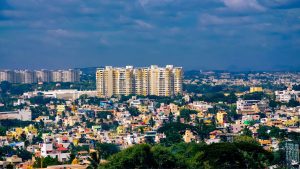
Bengaluru, famously known as the “Silicon Valley of India,” has grown into one of the country’s most developed cities, driven by its thriving tech scene and vibrant cultural landscape.
This city is a hub for innovation, drawing young professionals and tech enthusiasts from all over the world, and it’s consistently at the forefront of India’s digital transformation.
Known for its entrepreneurial spirit, Bengaluru has fostered a robust startup ecosystem, making it one of the most significant technology centers in Asia.
Beyond its tech-driven identity, Bengaluru is celebrated for its lush greenery, historic landmarks, and active arts scene, adding a unique charm to its modern outlook.
The city’s blend of traditional values with a cosmopolitan lifestyle creates a dynamic atmosphere, making it a prime example of India’s evolving urban spaces. Its commitment to growth and sustainability highlights Bengaluru’s role in India’s urban future.
Bengaluru’s Key Statistics
| Category | Details |
| City Name | Bengaluru |
| State | Karnataka |
| Population (approx.) | 14 million (2024) |
| GDP Contribution | ~$359 billion USD, contributing around 8.5% to India’s GDP |
| Key Industries | IT, Biotechnology, Aerospace, Electronics, Education |
| HDI Rank | High HDI, noted for high literacy and access to advanced healthcare and services. |
| Quality of Life Index | 136.4 (high standard of living, significant cost of living) |
| Literacy Rate (%) | 88.5% (above the national average) |
| Per Capita Income | ~$4,500 – $6,500 USD |
| Major Infrastructure | Kempegowda International Airport, Namma Metro, Outer Ring Road, Electronic City |
| Prominent Tech & Business Hubs | Whitefield, Electronics City, Koramangala, Manyata Tech Park |
| Tourism Attractions | Lalbagh Botanical Gardens, Bangalore Palace, Bannerghatta National Park, Cubbon Park, Vidhana Soudha |
| Education and Research Institutes | IISc, IIM Bangalore, Bangalore University, NIMHANS, Christ University |
| Healthcare Facilities | Numerous hospitals and research facilities, including Fortis, Manipal, Narayana Health |
| Environmental Initiatives | Emphasis on lake restoration, sustainable public transport, and green spaces |
4. Hyderabad
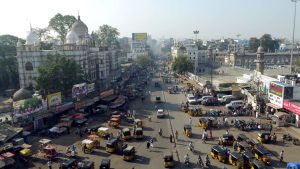
Hyderabad, the “City of Pearls,” has transformed from a historical city into one of India’s most developed urban centres. Renowned for its rich heritage and architectural landmarks like the Charminar and Golconda Fort, Hyderabad also boasts modern attractions that cater to both tradition and innovation.
The city’s unique charm lies in its seamless blending of centuries-old culture with cutting-edge urban planning, making it a popular destination for residents and tourists alike.
In recent years, Hyderabad has grown rapidly, driven by significant infrastructure projects and a cosmopolitan lifestyle that appeals to young professionals and families.
Known for its culinary scene and vibrant bazaars, the city’s quality of life continues to rise alongside its focus on sustainability. As one of the fastest-growing cities in India, Hyderabad’s development is a testament to its adaptability and strategic vision for the future.
Hyderabad’s Key Statistics
| Category | Details |
| City Name | Hyderabad |
| State | Telangana |
| Population (approx.) | 11 million (2024) |
| GDP Contribution | ~$200 billion USD, contributing around 11.9% to India’s GDP |
| Key Industries | Information Technology, Pharmaceuticals, Manufacturing, Tourism |
| HDI Rank | High HDI, known for well-developed healthcare and education sectors |
| Quality of Life Index | 132.1 (high standard of living with a moderate cost of living) |
| Literacy Rate (%) | 83.2% (above national average) |
| Per Capita Income | ~$4,700 USD |
| Major Infrastructure | Rajiv Gandhi International Airport, Hyderabad Metro, Outer Ring Road |
| Prominent Tech & Business Hubs | HITEC City, Gachibowli, Banjara Hills, Jubilee Hills |
| Tourism Attractions | Charminar, Golconda Fort, Ramoji Film City, Hussain Sagar Lake, Salar Jung Museum |
| Education and Research Institutes | University of Hyderabad, Osmania University, Indian School of Business, IIIT Hyderabad |
| Healthcare Facilities | Multiple hospitals and health facilities, including Apollo, KIMS, Yashoda |
| Environmental Initiatives | Focus on green parks, lake restoration projects, plastic ban initiatives |
5. Chennai
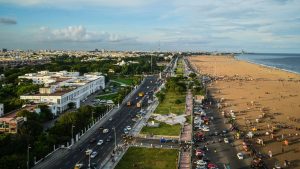
Chennai, known as the “Gateway to South India,” is celebrated for its deep-rooted cultural heritage and significant role in India’s industrial landscape. From classical music and dance to its historic temples, Chennai is a city that proudly preserves its traditions while embracing modernization.
As a coastal city, it has been a prominent centre for trade for centuries, shaping its growth into a major economic hub. In addition to its cultural wealth, Chennai’s rapid urban development is evident in its well-established infrastructure and commitment to expanding public facilities.
The city has a unique charm that appeals to both locals and visitors, with its vibrant arts scene, thriving neighbourhoods, and coastal attractions.
As one of India’s most developed cities, Chennai continues to balance progress with cultural preservation, making it a captivating and influential city on the national stage.
Chennai’s Key Statistics
| Category | Details |
| City Name | Chennai |
| State | Tamil Nadu |
| Population (approx.) | 12.5 million (2024) |
| GDP Contribution | ~$378 billion USD, contributing around 16% to India’s GDP |
| Key Industries | Automotive, Information Technology, Electronics, Manufacturing, Textiles |
| HDI Rank | High HDI, with developed healthcare and education sectors |
| Quality of Life Index | 127.8 (high standard of living with affordable cost of living) |
| Literacy Rate (%) | 80.14% (among the highest in India) |
| Per Capita Income | ~$3,777 USD |
| Major Infrastructure | Chennai International Airport, Chennai Metro, Outer Ring Road, IT Parks |
| Prominent Tech & Business Hubs | Tidel Park, OMR (IT Corridor), Guindy Industrial Estate, Ambattur Industrial Estate |
| Tourism Attractions | Marina Beach, Fort St. George, Kapaleeshwarar Temple, Mahabalipuram |
| Education and Research Institutes | Anna University, IIT Madras, Madras Medical College, Loyola College |
| Healthcare Facilities | Several leading hospitals, including Apollo, Fortis Malar, and Sri Ramachandra |
| Environmental Initiatives | Focus on green space conservation, waste management, and beach clean-up projects |
6. Pune
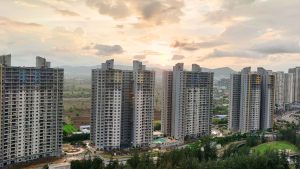
Pune, often called the “Oxford of the East” for its premier educational institutions, is known as one of India’s most developed cities, blending academic excellence with rapid industrial growth. This city is home to a young, vibrant population that contributes to its lively atmosphere and modern lifestyle.
Over the years, Pune has evolved from a quiet, cultural city into a dynamic urban centre, attracting students, professionals, and entrepreneurs from across India and beyond. The Hinjewadi IT Park, a thriving hub for technology and innovation, has further cemented Pune’s reputation as a tech-forward city and a magnet for global companies.
Aside from its academic reputation, Pune is known for its green landscapes, historic sites, and a strong sense of community. The city’s pleasant climate, thriving arts scene, and bustling markets add to its charm.
Pune’s ongoing infrastructure developments aim to improve connectivity and quality of life, making it a key player in Maharashtra’s growth and a favorite among those seeking a balanced urban experience.
Pune’s Key Statistics
| Category | Details |
| City Name | Pune |
| State | Maharashtra |
| Population (approx.) | 7.4 million (2024) |
| GDP Contribution | ~$510 billion USD, contributing around 17.05% to India’s GDP |
| Key Industries | Education, IT, Automotive, Manufacturing, Research & Development |
| HDI Rank | High HDI, supported by strong education and healthcare sectors |
| Quality of Life Index | 130.5 (high standard of living with a moderate cost of living) |
| Literacy Rate (%) | 73% (above national average) |
| Per Capita Income | ~$2,396 USD |
| Major Infrastructure | Pune International Airport, Pune Metro (under development), Outer Ring Road |
| Prominent Tech & Business Hubs | Hinjewadi IT Park, Magarpatta City, Kharadi IT Park, Pimpri-Chinchwad Industrial Area |
| Tourism Attractions | Shaniwar Wada, Aga Khan Palace, Sinhagad Fort, Osho Ashram |
| Education and Research Institutes | Savitribai Phule Pune University, Symbiosis International University, Fergusson College |
| Healthcare Facilities | Numerous hospitals, including Ruby Hall Clinic, Jehangir Hospital, Deenanath Mangeshkar Hospital |
| Environmental Initiatives | Initiatives for river cleaning, waste segregation, green building projects |
7. Ahmedabad
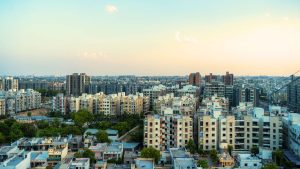
Ahmedabad, a bustling metropolis in Gujarat, is one of India’s most developed cities and a key contributor to the nation’s economy. Known for its deep historical roots and entrepreneurial spirit, Ahmedabad has grown into a thriving centre of trade and commerce.
Its rich history, marked by the Sabarmati Ashram and vibrant festivals, blends with modern urban advancements, making it a unique destination for culture and business alike.
The city’s steady industrial growth, combined with its well-preserved heritage sites, attracts both investors and tourists. Ahmedabad is noted for its vibrant textiles, colourful markets, and impressive architectural landmarks, including ancient stepwells and historical mosques.
The city is continuously working on sustainable urban planning initiatives and infrastructure upgrades, paving the way for balanced development and a high quality of life for its residents.
Ahmedabad’s Key Statistics
| Category | Details |
| City Name | Ahmedabad |
| State | Gujarat |
| Population (approx.) | 8.8 million (2024) |
| GDP Contribution | ~$334 billion USD, contributing around 8.6% to India’s GDP |
| Key Industries | Textiles, Chemicals, Pharmaceuticals, Trade & Commerce, Information Technology |
| HDI Rank | High HDI, with notable healthcare and educational facilities |
| Quality of Life Index | 128.7 (moderate to high standard of living) |
| Literacy Rate (%) | 89.6% (above national average) |
| Per Capita Income | ~$4,665 USD |
| Major Infrastructure | Sardar Vallabhbhai Patel International Airport, Ahmedabad Metro (under development), Sabarmati Riverfront |
| Prominent Tech & Business Hubs | GIFT City, Prahlad Nagar, Sanand Industrial Estate, Ashram Road |
| Tourism Attractions | Sabarmati Ashram, Kankaria Lake, Adalaj Stepwell, Jama Masjid, Sidi Saiyyed Mosque |
| Education and Research Institutes | Gujarat University, IIM Ahmedabad, NID, CEPT University |
| Healthcare Facilities | Advanced medical facilities, including Civil Hospital, Apollo Hospital, and Sterling Hospital |
| Environmental Initiatives | Riverfront redevelopment, focus on green public spaces, solar initiatives |
8. Kolkata
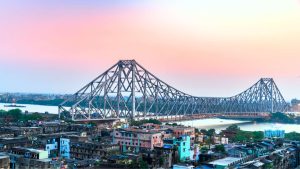
Kolkata, the cultural capital of India, is celebrated for its literary heritage, vibrant arts, and historical significance. As one of India’s most developed cities, Kolkata offers a unique blend of old-world charm and modern urbanization.
Known for its colonial-era architecture, the city is home to iconic landmarks such as the Victoria Memorial, Howrah Bridge, and bustling local markets. Kolkata’s cultural festivals and intellectual heritage make it a distinctive urban centre in India’s landscape.
Beyond its cultural richness, Kolkata has developed into a key economic and educational hub in eastern India. The city has made significant advancements in infrastructure and urban planning, with expanding metro lines and a bustling port that supports trade.
Kolkata’s friendly, close-knit communities and traditional neighbourhoods add to its warmth, while recent developments reflect the city’s commitment to growth and modernization.
Kolkata’s Key Statistics
| Category | Details |
| City Name | Kolkata |
| State | West Bengal |
| Population (approx.) | 15 million (2024) |
| GDP Contribution | ~$150 billion USD, contributing around 1.05% to India’s GDP |
| Key Industries | Textiles, Information Technology, Engineering, Trade, Jute Processing |
| HDI Rank | High HDI, with well-established healthcare and educational institutions |
| Quality of Life Index | 125.3 (moderate to high living standards) |
| Literacy Rate (%) | 87.14% (above the national average) |
| Per Capita Income | ~$2,100 USD |
| Major Infrastructure | Netaji Subhas Chandra Bose International Airport, Kolkata Metro, Howrah Bridge, Eastern Metropolitan Bypass |
| Prominent Tech & Business Hubs | Salt Lake Sector V, Rajarhat, New Town, Park Street |
| Tourism Attractions | Victoria Memorial, Howrah Bridge, Indian Museum, Dakshineswar Kali Temple |
| Education and Research Institutes | University of Calcutta, Jadavpur University, Presidency University |
| Healthcare Facilities | Notable hospitals include Apollo Gleneagles, AMRI, and Fortis |
| Environmental Initiatives | Emphasis on reducing air pollution, riverfront development, waste management |
9. Surat

Surat, often called the “Diamond City of India,” has rapidly evolved into one of India’s most developed urban centres, recognized for its booming textile and diamond industries.
This vibrant city combines industrial success with a strong cultural identity, attracting both domestic and international business opportunities.
Surat’s modern infrastructure, alongside its bustling port, supports its dynamic economy and positions it as a prominent trading hub on the global stage.
Despite its rapid growth, Surat has managed to retain its friendly, close-knit community atmosphere. The city is well-regarded for its clean streets, efficient transportation, and emphasis on quality of life.
As one of the fastest-growing cities in the world, Surat’s development strategies focus on sustainability and efficient urban planning, making it a leading example for other emerging cities across India. Its diverse cultural heritage also adds depth to its progressive outlook.
Surat’s Key Statistics
| Category | Details |
| City Name | Surat |
| State | Gujarat |
| Population (approx.) | 7.8 million (2024) |
| GDP Contribution | ~$45 billion USD, contributing around 0.68% to India’s GDP |
| Key Industries | Diamond Processing, Textiles, Trade, Port & Shipping, Engineering |
| HDI Rank | High HDI, supported by access to healthcare and educational services |
| Quality of Life Index | 129.1 (high living standards with relatively low cost of living) |
| Literacy Rate (%) | 87.8% (above national average) |
| Per Capita Income | ~$7500 USD |
| Major Infrastructure | Surat Airport, BRTS (Bus Rapid Transit System), Diamond Research and Mercantile City (Dream City) |
| Prominent Tech & Business Hubs | Diamond and Textile Hubs, Hazira Industrial Area, Sachin Industrial Estate |
| Tourism Attractions | Dumas Beach, Dutch Garden, Surat Castle, Science Centre |
| Education and Research Institutes | SVNIT, Veer Narmad South Gujarat University, Government Medical College |
| Healthcare Facilities | Major hospitals include Sunshine Global, Apollo, and Kiran Multi-Specialty Hospital |
| Environmental Initiatives | Cleanliness campaigns, waste management programs, smart city initiatives |
10. Jaipur
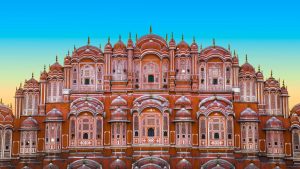
Jaipur, known as the “Pink City,” is a top destination in India for its blend of royal heritage and growing urban development. As one of India’s most developed cities, Jaipur offers a unique mix of historical charm and modern infrastructure.
Its rich architectural heritage, including the Amber Fort, Hawa Mahal, and City Palace, attracts millions of tourists, making it a major cultural and economic hub in Rajasthan.
Beyond its tourism, Jaipur has experienced rapid growth in recent years, with initiatives that focus on sustainable urban planning, tech parks, and expanding educational facilities.
The city’s markets, renowned for jewellery, textiles, and handicrafts, add to its vibrant economy. Jaipur’s steady advancement in infrastructure and quality of life positions it as a leading example of a city that balances preservation with progress, appealing to both residents and visitors.
Jaipur’s Key Statistics
| Category | Details |
| City Name | Jaipur |
| State | Rajasthan |
| Population (approx.) | 4.3 million (2024) |
| GDP Contribution | ~$23 billion USD, contributing around 5% to India’s GDP |
| Key Industries | Tourism, Handicrafts, Jewellery, Textiles, Information Technology |
| HDI Rank | Moderate to high HDI, with improved healthcare and education services |
| Quality of Life Index | 126.2 (high quality of life with moderate living costs) |
| Literacy Rate (%) | 83.3% (above the national average) |
| Per Capita Income | ~$2,001 USD |
| Major Infrastructure | Jaipur International Airport, Jaipur Metro, Ring Road |
| Prominent Tech & Business Hubs | Sitapura Industrial Area, Mahindra World City, EPIP Zone, Vaishali Nagar |
| Tourism Attractions | Amber Fort, Hawa Mahal, City Palace, Jantar Mantar, Nahargarh Fort |
| Education and Research Institutes | University of Rajasthan, MNIT Jaipur, SMS Medical College |
| Healthcare Facilities | Leading hospitals include Fortis, SMS Hospital, and EHCC |
| Environmental Initiatives | Waste management programs, green building initiatives, and heritage conservation |
Conclusion
India’s top developed cities are not just urban centres but key contributors to the nation’s progress and prosperity. These cities, with their robust infrastructure, thriving industries, and high standards of living, exemplify India’s commitment to growth and modernity.
As each city continues to innovate and expand, it sets an example for sustainable urban development while preserving unique cultural identities. From economic impact to quality of life, these cities drive India forward and reflect its potential as a global powerhouse.
By ranking these cities, we’ve seen how they balance tradition with development, showing what is possible through vision and resilience. The growth of these cities inspires both India and the world, pointing toward a promising future for the country.
FAQs About Top 10 Most Developed City in India
What is considered the most developed city in India?
Mumbai is widely regarded as the most developed city in India due to its large GDP contribution, established infrastructure, and strong financial, entertainment, and industrial sectors.
Which city in India has the highest GDP?
Mumbai has the highest GDP among Indian cities, contributing significantly to the nation’s economy through industries like finance, entertainment, and trade.
Why is Bengaluru called the “Silicon Valley of India”?
Bengaluru is known as the “Silicon Valley of India” because it’s a major IT hub, hosting numerous tech giants, startups, and research institutions that drive India’s tech growth.
How does Delhi contribute to India’s development?
Delhi, as the capital, is a political and economic powerhouse, with industries spanning government, telecommunications, and trade, supporting significant GDP contributions.
What makes Hyderabad a key developed city?
Hyderabad has rapidly developed as a tech and pharmaceutical hub with advanced infrastructure, multinational companies, and a thriving cultural scene.
Which city is known for its high quality of life in India?
Bengaluru and Pune are known for a high quality of life due to favourable climates, green spaces, educational institutions, and active tech and industrial sectors.
What is the role of infrastructure in a city’s development?
Infrastructure supports economic activity, improves living standards, and attracts investment by providing essential services like transport, housing, and public facilities.
Why is sustainable development important in Indian cities?
Sustainable development ensures that cities grow without harming the environment, balancing economic growth with the need to reduce pollution and conserve resources.
How do industries influence a city’s growth?
Industries create jobs, stimulate local economies, and increase a city’s GDP, attracting talent and supporting additional businesses and services.
Which city is the fastest-growing in terms of infrastructure?
Surat is known for its rapid infrastructure growth, with investments in transport, clean city initiatives, and industrial zones enhancing its development trajectory.




